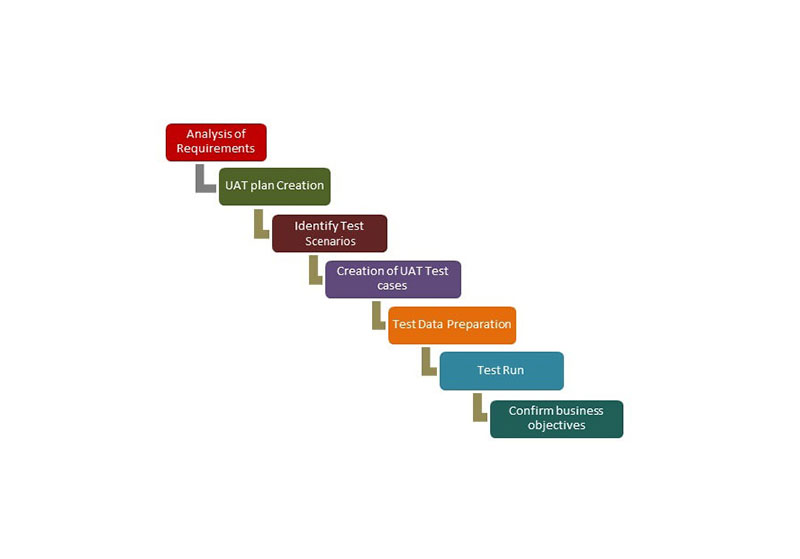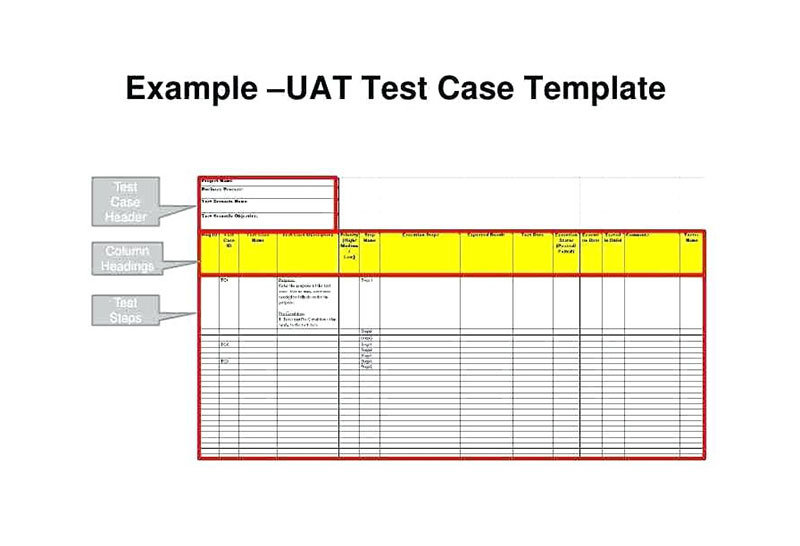UAT (User Acceptance Testing) is the final testing phase for any software product and represents a crucial set of procedures in the software development lifecycle. Before a software product is launched on the market, it needs to be subject to UAT testing or it might just fall dead in the water upon release.
You might know this testing phase as beta testing, app testing, or end-user testing. Regardless of the name you know, UAT testing refers to a set of testing steps taken right before making a software product available for sale.
During this phase, the product can be available for free as a beta version, or it can be tested in-house. This article will discuss the meaning and importance of UAT testing, as well as the steps involved in the UAT testing process.
Defining UAT Testing
Many new developers have heard about UAT testing but don’t know much about the process itself. Fortunately, the full form of the acronym, User Acceptance Testing, is self-explanatory and refers to testing a pre-release product to see if it is acceptable for end users.
Other people call it beta testing because it is the final phase in the process of developing a software product, and the version being tested is usually called a beta release.
To elaborate on the question of “what UAT is”, it represents a somewhat well-defined series of test procedures that can be applied either by people who are selected as part of the target audience to which the software product will be sold or by in-house teams of software testers.
The UAT phase essentially helps to detect unexpected errors, bugs, and other barriers to a smooth user experience so that the development team can correct them before the official launch.
UAT Criteria

Now you know what UAT testing is, it’s time to move on to the criteria that are taken into account when performing this testing phase. Overall, there is a set of requirements that needs to be respected during User Acceptance Testing for the best results.
These requirements are set according to the software product that is being developed, as well as to the conditions set by the business which owns the product. Setting the right criteria for UAT testing ensures the success of the entire operation. Some popular entry criteria are:
- Analyzing the business requirements and if they have been met
- Having developed the application code fully and to all specifications
- Completing unit, integration, and system testing before starting UAT testing
- No major defects present before the final test phase – only cosmetic defects are allowed before UAT
- Completing automated regression testing with little to no defects
- All defects found before starting the UAT procedure should be fixed
- The System Testing Team has sent approval for starting UAT
Why Is UAT Testing So Important?

The next question would be why do developers need User Acceptance Testing in the first place if the product is basically ready?
Well, the answer is simple. Developers have a very technical way of creating a product and they interpret data and facts from a methodological point of view. Developers know when the software product is completed only when talking about code and functional specifications.
This is where UAT intervenes. A functional product is not necessarily one that meets business standards and requirements. In order to adapt the product to real-life circumstances, it needs to go through the User Acceptance Testing process.
This way, the product is verified by people who would like to work with the product and who will actually use the product on a regular basis.
Whenever UAT testers notice that something is not right, they can send their feedback to the development team that can make further improvements. This is the safest way to improve a product and launch it without errors. The more time is invested in User Acceptance Testing, the better the software product will be in its final version.
Without beta testing, the software product would not be validated and users who purchase it directly will be the ones to discover the errors and downsides of it. Instead of putting a broken software product to market use, it’s best to run UAT procedures and see what can be improved.
Who Is Behind UAT Testing?
Another confusion that is common when discussing UAT has to do with who performs it? User Acceptance Testing, as the name suggests, should generally be performed by regular users.
Professional testers and software testing companies only deal with testing parts of the software product that are more technical. End users, on the other hand, are required to test their experience with the product as a whole.
Product team members won’t have an objective perspective on the product when testing it. This is why UAT testing is performed by people who are outside the development team. Any person who is part of the development process will have a tunnel vision perspective which is not appropriate for testing.
Moreover, developers tend to skip steps in the testing process because they already know how the product works, which is time-saving but very inefficient because unexpected problems can easily arise in non-standard usage.
Secondly, UAT testing requires a genuine user reaction that gives some hints about whether the product is appreciated by the target audience members or not.
UAT Testing Process Steps

Now that you know what User Acceptance Testing is, let’s look at the steps involved in this process. Here’s a list with a short description of each step:
Planning
The planning stage involves outlining the strategy that will be applied during the UAT procedure. There are different strategies that can be used in this direction, but the team has to choose the strategy that aligns with business requirements and timelines.
Test Scenarios
After planning UAT testing, it’s time to identify different test scenarios. These refer to establishing what should happen in each situation and covering all the potential situations that may arise when using the software product. These are used to create test cases.
Test Cases

Test cases heavily rely on live data coming from the UAT process itself. Data is scrambled to avoid privacy issues and to keep the evaluation objective. When running the test cases, all encountered bugs and glitches need to be reported.
For executing the test cases, developers use various Test Management tools.
Business Requirements
Finally, UAT testing analyzes whether the product respects business requirements or not. If the answer is positive, the product can be launched on the market.
If there are still issues that need fixing, another round of UAT will be required after making the needed changes.
UAT Testing Benefits

Even though the investments in UAT are considerable, so are the benefits. UAT testing only requires 5% to 10% of the entire development process and it can save 30% of the time required for making additional fixes and changes. UAT testing is necessary for a good ROI score for such projects. Other benefits include:
- Clients are more satisfied with the final version of the product.
- Clients will know from the very beginning what the target audience thinks, how they react to the product, how the product behaves, and so on.
- The quality of the product is verified through all stages of development.
- Vendor communication is better, as they get information after each testing session.
- The development team has an efficient, well-defined workflow.
- Stakeholders know what the target audience wants through the feedback offered during UAT.
Ending thoughts on UAT Testing
As you may have noticed, UAT cannot be neglected. UAT testing can prevent the development team from making difficult changes or wasting time down the line, and can save the business from embarrassing uncaught mistakes.
The testing process keeps both users and businesses happy, reduces a considerable amount of costs, saves time, and plenty more benefits that are worth considering.
At the end of the day, a software product should never be launched without testing because users will discover bugs and errors. Even though they may be small, they will negatively affect the user experience and – with that – the sales of the company that owns the product.
We hope you enjoyed reading this article on UAT testing created by the team at Amelia (the best booking plugin for WordPress).
You should also check out this one on persona template.
We also wrote about a few related subjects like User Interface design principles, web usability, affordance, how to become a UX designer and UX designer portfolio.

